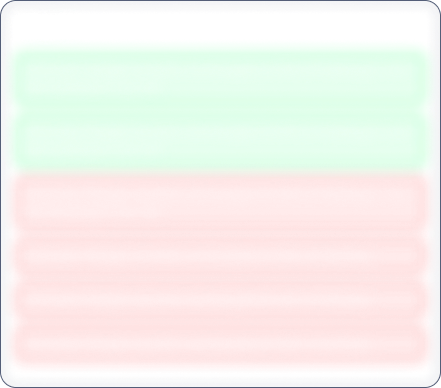Year End Sale 50% off
T T

No Data Available
Investor Sentiment
T T Share price and Fundamental Analysis
Key Metrics
Stock Returns
Stock Heatmap

No Stocks
Smart Score

Unlock Smart Score
See Detailed Analysis & Insights


Unlock Insights
See Detailed Analysis & Insights
Technicals
Returns Calculator
If you would have investedResearch Report
No Research Report
Corporate Action
Financials
Key Ratios
ROE
Avg ROE (3 Yrs) : NaN%
ROCE
Avg ROCE (3 Yrs) : NaN%
ROA
Avg ROA (3 Yrs) : NaN%
NPM
Avg NPM (3 Yrs) : NaN%
Dividend History
5 Year FactSheet
Documents

No Data Available
News
T T Management and History
Company Management


Unlock Management Data
See Detailed Analysis & Insights
Company History
Tirupati Texknit, now renamed TT Ltd (TTL), promoted by R C Jain and incorporated as a public limited company in Sep.'78, has facilities to manufacture knitted cloth at Ghaziabad, UP. The Company is engaged in Textile, comprising of yarn manufacturing, Knitting, and cutting and sewing of textiles products.
The company, since Apr.'89, has production arrangements with about 50 franchised hosiery production units in Delhi, Calcutta, UP, MP and Tamilnadu to produce goods exclusively for and according to specifications and quality standards laid down by the company.
TTL went public with its maiden issue in Jan.'90 to meet the financial requirements of its franchise units and to meet working capital requirements. In Feb.'93, TTL came out with a public issue to part-finance the backward integration programme of setting up a Rs 21.05-cr 12,500-spindle 100% export-oriented spinning unit to manufacture cotton yarn at Gajraula, UP. TTL has a dealer network of 1500 wholesalers throughout India. During 1996-97, had earned the status of Registered Export House.
In 1999-2000, the company's mill at Avanashi, in Coimbatore District obtained ISO 9002 Quality Certificate.
The company has initiated the Technology Upgradation Programme to replace all the spindles at Gajroula Mill Plant.The proposal had been submitted to Financial Institutions for the approval.
During the year 2004, Company completed relocation of its knitting plant at Gajroula with most 'state of art' 'Mayer & Cie', German Knitting Machines. With this, company has started fabric exports as well. 1008 spindles were introduced at Avanashi Unit. Garment manufacturing unit at Noida and Tirupur was expanded and modernised during the year. Latest 500 Garment Machines project having capacity of manufacturing 14000 pcs. garments per day were acquired.
In 2005, it completed upgradation of its spinning units and knitting factory with ultra modern machines and technology. Ginning factory at Gondal, Gujarat commenced production in March, 2006. The windmill project of 2.5MW in Tamil Nadu commenced production in March, 2006.
During year 2006-07, the Company came out with Rights Issue of 10749025 Equity Shares Rs 10/ each at a premium of Rs 10/- per share in the ratio of one Equity Share for every one Equity Shares (i.e. 1:1). Rights Issue was oversubscribed. Allotment was made on 14th November, 2006. Consequent to this allotment, company's Equity Share capital doubled.
The Company in 2011-12 commissioned garment expansion project in Avinashi costing Rs 20 Cr. New products were launched into Casual Wear Segment. Ongoing expansion projects like 25200 new spindles spinning mill in Rajula, Gujarat started commercial production in April, 2013. It commissioned 2.1MW Wind Mill Plant in Gujarat in 2016-17. 'HiFlyers', a new innerwear brand was launched in 2017.
T T Share Price
T T share price reflects investor sentiment toward the company and is impacted by various factors such as financial performance, market trends, and economic conditions. Share price is an indicator which shows the current value of the company's shares at which buyers or sellers can transact.
T T Market Cap
Market capitalization of T T indicates the total value of its outstanding shares. Marketcap is calculated by multiplying share price and outstanding shares of the company. It is a helpful metric for assessing the company's size and market Valuation. It also helps investors understand how T T is valued compared to its competitors.
T T PE Ratio
T T PE ratio helps investors understand what is the market value of each stock compared to T T 's earnings. A PE ratio higher than the average industry PE could indicate an overvaluation of the stock, whereas a lower PE compared to the average industry PE could indicate an undervaluation.
T T PEG Ratio
The PEG ratio of T T evaluates its PE ratio in relation to its growth rate. A PEG ratio of 1 indicates a fair value, a PEG ratio of less than 1 indicates undervaluation, and a PEG ratio of more than 1 indicates overvaluation.
T T ROE (Return on Equity)
Return on Equity (ROE) measures how effectively T T generates profit from shareholders' equity. A higher ROE of more than 20% indicates better financial performance in terms of profitability.
T T ROCE (Return on Capital Employed)
Return on Capital Employed (ROCE) evaluates the profitability of T T in relation to its capital employed. In simple terms, ROCE provides insight to investors as to how well the company is utilizing the capital deployed. A high ROCE of more than 20% shows that the business is making profitable use of its capital.
T T Total Debt
Total debt of T T shows how much the company owes to either banks or individual creditors. In simple terms, this is the amount the company has to repay. Total debt can be a very useful metric to show the financial health of the company. Total debt more than equity is considered to be a bad sign.
T T Debt to Equity Ratio
The Debt-to-Equity (DE) ratio of T T compares its total debt to shareholders' equity. A higher Debt to Equity ratio could indicate higher financial risk, while a lower ratio suggests that the company is managing its debt efficiently.
T T CAGR (Compound Annual Growth Rate)
CAGR shows the consistent growth rate of T T over a specific period, whether it is over a month, a year, or 10 years. It is a key metric to evaluate the company’s long-term growth potential. Main metrics for which CAGR is calculated are net sales, net profit, operating profit, and stock returns.
T T Technical Analysis
Technical analysis of T T helps investors get an insight into when they can enter or exit the stock. Key components of T T Technical Analysis include:
Support Levels (S1, S2, S3)
There are usually multiple support levels, but the main support levels for a stock are S1, S2, S3. Support levels indicate price points where stock might get support from buyers, helping the stock stop falling and rise.
Resistance Levels (R1, R2, R3)
There are usually multiple resistance levels, but the main resistance levels for a stock are R1, R2, R3. Resistance levels represent price points where T T shares often struggle to rise above due to selling pressure.
T T Dividends
Dividends refer to the portion of the company’s profits distributed to its shareholders. Dividends are typically paid out in cash and reflect T T ’s financial health and profitability.
T T Bonus Shares
Bonus shares are usually given by companies to make the stock more affordable, increase liquidity, boost investor confidence, and more.
T T Stock Split
Stock split increases the number of its outstanding shares by dividing each existing share into multiple shares. When the company offers a stock split, the face value of the stock reduces in the same proportion as the split ratio.
T T Financials
The financials of T T provide a complete view to investors about its net sales, net profit, operating profits, expenses, and overall financial health. Investors can analyze financial data to assess the company’s stability and also understand how the company has been growing financially.
T T Profit and Loss Statements
The profit and loss statement of T T highlights its net sales, net profit, total expenditure, and operating profits in the current financial year. This Profit and Loss statement is crucial for evaluating the profitability and financial stability of T T .
T T Balance Sheet
The balance sheet presents a snapshot of T T ’s assets, liabilities, and equity of shareholders, providing insights into the financials of the company.
T T Cashflow Statements
Cashflow statements track the company's cash inflows and outflows over a period. It is an essential tool for understanding how well the company manages its liquidity and finances.


